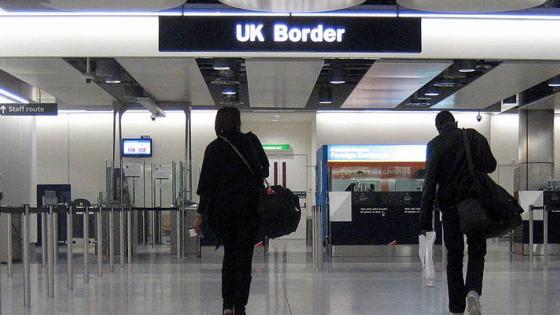At a time when discussion of immigration policy across the developed world is increasingly dominated by populism, nativism, and indeed racism, one welcome note of rationality is the existence of the UK Government’s independent Migration Advisory Committee (MAC). Introduced by a Labour government, its role – to advise the government on immigration policy on the basis of (mostly economic) evidence – has been expanded by the current Conservative one, and it is currently chaired by the eminent labour economist Alan Manning (LSE).
Last week the MAC produced the most comprehensive, evidence-based assessment of the impact of immigration on the UK ever published (MAC 2018). Based on both academic research and the MAC’s own analysis, it examines the impact of migration on the economy and society – looking not just at employment and wages, but at productivity and growth, the public finances, and even individual wellbeing.
In a number of areas – for example, the direct impact of immigration on the labour market – the report broadly confirms the existing consensus, which I have described previously on Vox (Portes 2018), that immigration has had little impact on native employment or wages overall, but may have had some relatively small impacts on lower paid or lower skilled workers. However, on other topics, the research breaks new ground.
The ‘productivity puzzle’ is the most pressing long-term economic policy issue facing the UK (Haldane 2018). However, the theoretical impact of immigration on productivity is ambiguous, because there are a number of conceptually different mechanisms that are potentially at work. In particular, are immigrants complements to natives, and do they increase incentives for natives to improve their skills; or do they reduce the incentive for firms to invest in either physical or human capital? In my previous Vox column, I discussed the potential mechanisms at work here, and noted that while the balance of evidence was that overall immigration appeared to have a positive impact on productivity, direct empirical evidence for the UK was sparse (Portes 2018).
The MAC report draws on three new papers. Campo et al. (2018) exploit geographical variation in the migrant share of the workforce, using an instrumental variable approach, to estimate the impact of immigration on productivity. It finds that a one percentage point increase in the share of immigrants within a UK local authority is associated with an almost three percentage point increase in productivity (measured as the growth in gross value output per head over the period considered). This result holds for both short- and long-term changes, and both at the local authority and the travel-to-work area level. This is a reduced-form result – no assumptions are made about the production function, and investment is not controlled for (because, as noted above, changes to investment is a possible transmission mechanism by which immigration might impact productivity, so doing so could bias the results).
Costas-Fernández (2018), by contrast, assumes a CES production function, and incorporates new estimates of the capital stock at a regional and sector level. The study finds that both migrants in high- and low-skilled occupations are, at the margin, more productive than their UK-born counterparts, with the central estimates suggesting that the marginal migrant is around 2.5 times as productive as a UK-born worker.
Finally, Smith (2018) also looks at a region-sector level, but the key dependent variable is total factor productivity (TFP) rather than labour productivity; she also uses firm-level data and imposes less structure on the production function. The central estimate is that a one percentage point increase in the migrant share results in a 1.6 per cent increase in TFP.
The striking element of all of these results – found by different papers using different methodologies and different data – is not just that immigration appears to have a positive impact on productivity growth, but that this impact is large; indeed, as the MAC say, arguably “implausibly large”, reflecting perhaps that some of the estimated impact may incorporate region- or sector-specific trends (despite the instrumental variable approach used by all the papers). Nevertheless, it’s worth noting that the estimates are broadly consistent with the most recent cross-country evidence (Jaumotte et al. 2016). In previous work, Giuseppe Forte and I found that post-Brexit reductions in immigration would likely have large negative impacts on UK productivity and GDP per capita (Forte and Portes 2016); that conclusion is strongly reinforced by this new evidence.
Closely related to this issue is the impact of immigration on training. Training rates have been falling in the UK for the last two decades (Green et al. 2013) and, as with productivity, concerns have been expressed that this may reflect reduced incentives for employer to provide training for native workers; but again the theoretical impact is ambiguous. Francesco Campo, Giuseppe Forte and I also look at the impact of migration on training for native workers (Campo et al. 2018), using a similar methodology to that we use for productivity, as do Mountford and Wadsworth (2018). The conclusions are weaker, but neither paper finds evidence that migration has had a negative impact on the training of the UK-born workforce.
Another topic of keen policy interest in the UK and elsewhere is the impact of immigration on the public finances. Previous work (Dustmann and Frattini 2014) found, looking at the impact of the existing UK migrant stock in 2011, that migrants from the European Economic Area (EEA) are relatively more beneficial to the public finances than natives, and those from outside the EEA less so.
However, for framing policy, this is not necessarily that useful; it gives us a snapshot of the impact of past migration, but tells us little about the about the long-term impact of current immigrants, who will over time progress in their careers, increase their use of public services, and eventually retire – although some of course will leave the country. Oxford Economics (2018) focuses specifically on the cohort of immigrants who arrived in the UK in 2016, and projects forward their fiscal impacts based on age-specific data on earnings, use of the NHS, migration return rates, and so on. Both EEA and non-EEA migrants are expected to make a significant positive net contribution to the UK public finances, with the average EEA migrant arriving in 2016 contributing a discounted total of around £78,000. Overall, the NPV of the future net contribution of 2016 arrivals to the UK public finances is estimated at £25 billion, or about 1.3% of GDP.
Taken together with the evidence on productivity, this has important implications for the political economy of immigration. It is often argued that the evidence from studies of the direct impact of immigration on wages suggests that while immigration may have positive impacts overall – for GDP and even per capita GDP – there are adverse distributional consequences, and that low-paid workers in particular would benefit from much tighter immigration controls (Goodhart 2017). However, if the indirect impacts on productivity and the public finances are as suggested by these papers, then any direct positive impacts on wages would be more than outweighed by the resulting necessity to increase taxes or to reduce spending on public services, at all points of the wage and income distribution.
The impact of immigration isn’t just economic. One of the arguments frequently made is that while immigration may have economic benefits overall, this is outweighed by other factors. Theresa May, the UK prime minister, has claimed that “when immigration is too high, when the pace of change is too fast, it’s impossible to build a cohesive society”. Giuletti and Yan (2018) extend the so-called happiness literature to examine the impact of immigration on ‘subjective wellbeing’, using two large and nationally representative longitudinal surveys. They find that the impact of immigration on life satisfaction at a local authority level is actually positive, although quite small, but the effect becomes insignificant at a more local level. However people may respond to opinion polls about immigration at the national level, the evidence does not suggest that people living in areas with higher levels of immigration experience lower levels of wellbeing as a consequence.
Analysis on its own can only go so far; it needs to be translated into policy. The MAC makes a number of specific policy recommendations, but it will be up to politicians to decide. In particular, the recommendation that – absent specific provisions in a post-Brexit trade deal – the UK have no specific provisions favouring EEA-origin workers in any future immigration system is important and controversial, and I will discuss it in future work.
References
Barone, G, and S Mocetti (2011), "With a little help from abroad: The effect of low-skilled immigration on the female labour supply", Labour Economics 18(5): 664-675.
Campo, F., Forte, G., and Portes, J (2018), “The Impact of Migration on Productivity and Native-born Workers’ Training”.
Dustmann C and T Frattini (2014), “The fiscal effects of immigration to the UK”, Economic Journal 124(580)
Forte, G and J Portes (2017), “The economic impact of Brexit-induced reductions in migration”, Oxford Review of Economic Policy 33: S31-S44
Giuletti, G, and Z Yan (2018), “The Impact of Immigration on the Well-being of UK Natives”.
Goodhart, D (2017), The Road to Somewhere: The Populist Revolt and the Future of Politics, Hurst.
Green, F, A Felstead, D Gallie, H Inanc and N Jewson (2013), “What Has Been Happening to the Training of British Workers?”, Centre for Learning and Life Chances in Knowledge Economies and Societies.
Haldane, A (2018), “The UK’s Productivity Problem: Hub No Spokes”, Bank of England.
Jaumotte, F, K Koloskova and S C Saxena (2016), “Impact of migration on income levels in advanced economies”, Spillover Task Force, IMF.
Migration Advisory Committee (2018), EEA Migration in the UK.
Mountford, A, and J Wadsworth (2018), “Jumping Someone Else’s Train? Does Immigration Affect the Training and Hiring of Native Born Workers”, report for the Migration Advisory Committee.
Oxford Economics (2018), “The Fiscal Impact of Immigration on the UK”.
Portes, J (2018), “The economic impacts of immigration to the UK”, VoxEU.org, 6 April.



